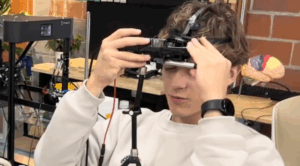
Researchers at Johns Hopkins Medicine have successfully employed a novel “zap-and-freeze” technique to observe the intricate communications between brain cells in living tissues. This groundbreaking technology allows scientists to visualize interactions that were previously difficult to study, enhancing our understanding of brain functions in both humans and mice.
The innovative method combines precise electrical stimulation with rapid freezing to capture the dynamic exchanges occurring among neurons. By applying this technique, researchers can freeze the cells at specific moments, thereby preserving the state of communication for further analysis. Such insights could hold significant implications for understanding various neurological conditions and brain functions.
Understanding the Technique
The “zap-and-freeze” approach utilizes a combination of targeted electrical pulses to activate brain cells, followed by an immediate freezing process. This allows scientists to capture the fleeting interactions that occur when neurons communicate through synapses. The research team reported that this method not only improves visualization but also enhances the accuracy of observing cellular behaviors.
According to the research published in October 2023, the technique has already yielded promising results in mouse models. As scientists expand their studies to human brain tissue, they hope to uncover new dimensions of brain activity that could inform therapies for neurological disorders.
The implications of this research extend beyond basic science. Understanding how neurons communicate could lead to advancements in treatment strategies for conditions such as Alzheimer’s disease, multiple sclerosis, and other neurodegenerative disorders. By elucidating the cellular mechanisms involved in these diseases, clinicians may develop more effective interventions.
Future Directions
The team at Johns Hopkins Medicine is optimistic about the potential applications of their findings. They plan to further refine the “zap-and-freeze” technique and explore its usability in studying other aspects of brain function. The hope is that this technology will not only enhance our understanding of the brain but also pave the way for innovative therapeutic approaches in the future.
As research continues, the collaboration between neuroscience and advanced imaging technologies represents a significant step forward in the quest to decode the complexities of the human brain. This work stands as a testament to the possibilities that arise when innovative techniques meet essential scientific questions.







